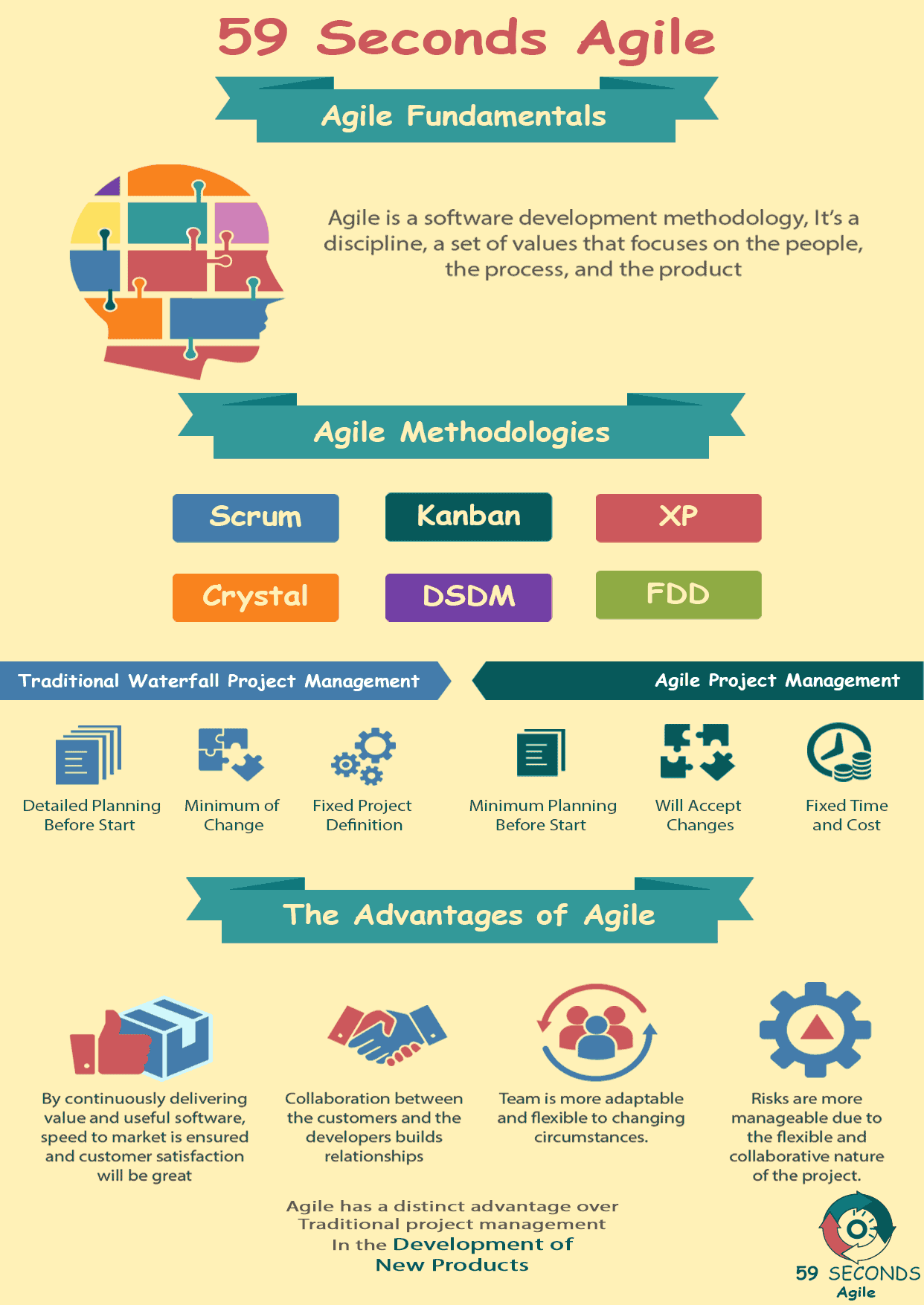This article looks to discuss what is the Agile Manifesto, and what the 4 Agile values are. The article the looks to discuss each of the 4 key Agile values.
The Agile Fundamentals
A 59 Seconds Agile Video Animation
The 4 Agile Values and the Agile Manifesto
A 59 Seconds Agile Article
The Agile Manifesto was founded in 2001 following a meeting between 17 software and Project experts. We are uncovering better ways of developing software by doing it and helping others to do it. Through this work we have come to Value:
- Individuals and interactions over processes and tools
- Working software over comprehensive documentation
- Customer collaboration over contract negotiations
- Responding to change over following a plan

That is, while there is Value in the items on the right, we Value the items on the left more.
Agile Manifesto Copyright
Agile Manifesto Copyright 2001: Kent Beck, Mike Beedle, Arie van Bennekum, Alistair Cockburn, Ward Cunningham, Martin Fowler, James Grenning, Jim Highsmith, Andrew Hunt, Ron Jeffries, Jon Kern, Brian Marick, Robert C. Martin, Steve Mellor, Ken Schwaber, Jeff Sutherland, Dave Thomas. This declaration may be freely copied in any form, but only in its entirety through this notice.
Agile Manifesto and the 4 Agile Values: Individuals and Interactions
Processes and tools assist with the success of a project, however, it is the people who undertake, implement and participate in the project. The people, therefore, determine how effectively the processes and tools are used.
Agile Manifesto and the 4 Agile Values: Working Software
Documenting is necessary for all projects, however, it is the deliverable that contains the business value. Agile focuses on delivering value in the form of working products, hence achieving a return on investment. Furthermore, this approach enables the customer to provide timely feedback on the delivered product.
Agile Manifesto and the 4 Agile Values: Customer Collaboration
Firstly a shared value approach with collaborating customers provides a shared product vision. The shared product vision is above all, fundamental to assisting with the completion of a successful project.
Agile Manifesto and the 4 Agile Values: Responding to Change
Agile involves embracing change and additionally turning that change into a competitive advantage. As customer requirements and the business environment are constantly changing, therefore adapting to changes enables the business to remain competitive. Responding to change requires the flexibility to compete with evolving and also emerging technologies. Flexibility and change are an integral part of an Agile project, where visibility, as well as transparency, are the focus.
Prev <— Continue Reading —> Next
User Stories Applied
A 59 Seconds Agile Book Review
User Stories Applied by Mike Cohn is one of our favourite books on Agile User Stories. The book starts with an overview into user stories, and details what a user story is and the different aspects of them. He then discusses how to go about writing a user story, and provides details of the INVEST criteria that can be used to determine if the story is meeting all of its objectives. Next Mike gives an in depth discussion of who user stories are written for and where to begin when gathering the details for them. The book then discusses acceptance testing user stories, including how to go about specifying these criteria and the responsibilities of the development team and customers during this process.
Prev <— Continue Reading —> Next
Learn More
Agile Project Management Training Courses
Agile Fundamentals
A 59 Seconds Agile Infographic

Prev <— Continue Reading —> Next
Our Favourite Agile Books




